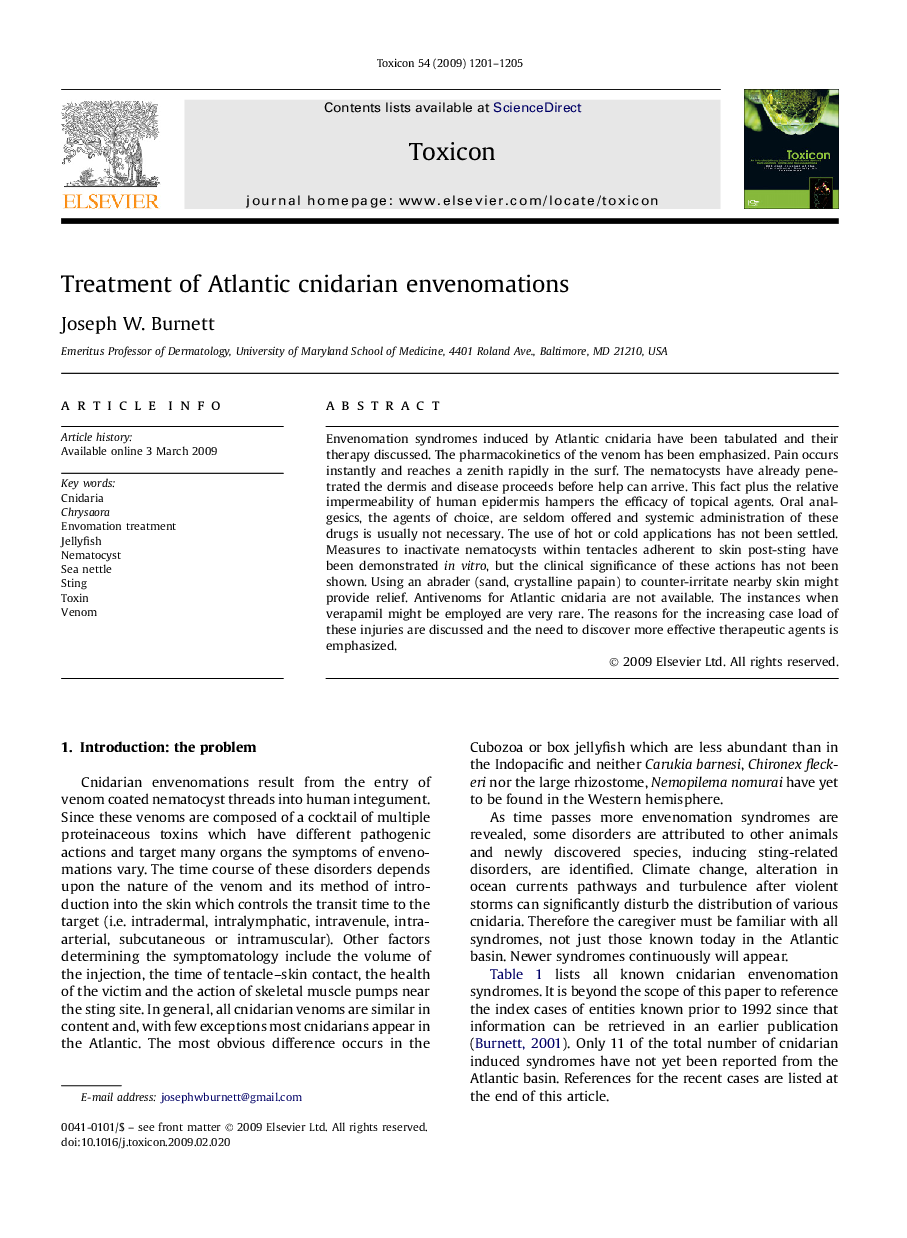| Article ID | Journal | Published Year | Pages | File Type |
|---|---|---|---|---|
| 2065118 | Toxicon | 2009 | 5 Pages |
Envenomation syndromes induced by Atlantic cnidaria have been tabulated and their therapy discussed. The pharmacokinetics of the venom has been emphasized. Pain occurs instantly and reaches a zenith rapidly in the surf. The nematocysts have already penetrated the dermis and disease proceeds before help can arrive. This fact plus the relative impermeability of human epidermis hampers the efficacy of topical agents. Oral analgesics, the agents of choice, are seldom offered and systemic administration of these drugs is usually not necessary. The use of hot or cold applications has not been settled. Measures to inactivate nematocysts within tentacles adherent to skin post-sting have been demonstrated in vitro, but the clinical significance of these actions has not been shown. Using an abrader (sand, crystalline papain) to counter-irritate nearby skin might provide relief. Antivenoms for Atlantic cnidaria are not available. The instances when verapamil might be employed are very rare. The reasons for the increasing case load of these injuries are discussed and the need to discover more effective therapeutic agents is emphasized.
